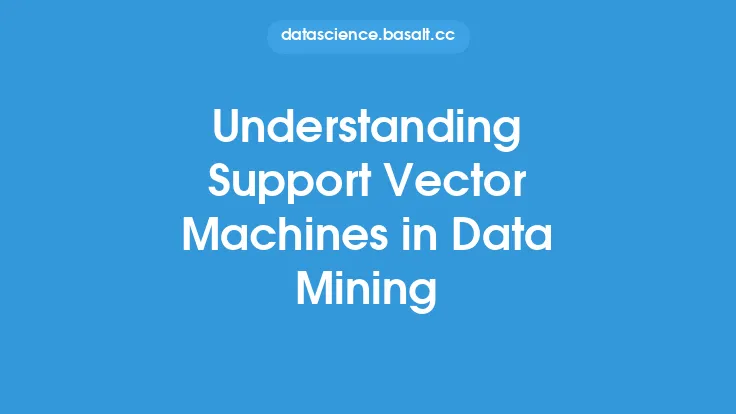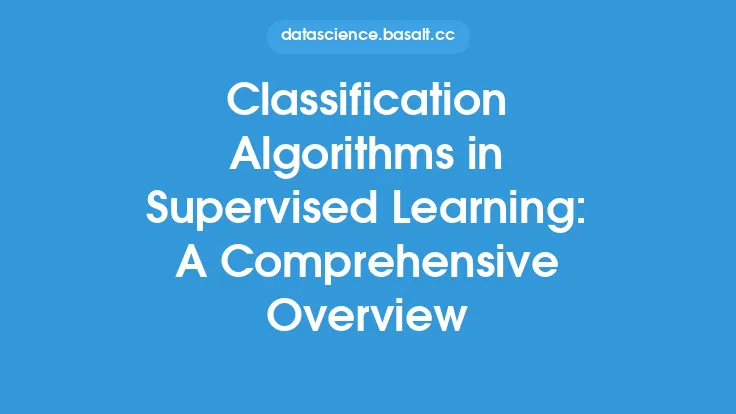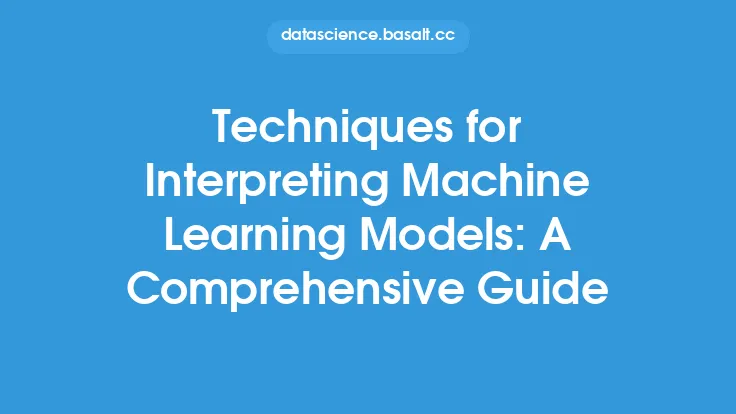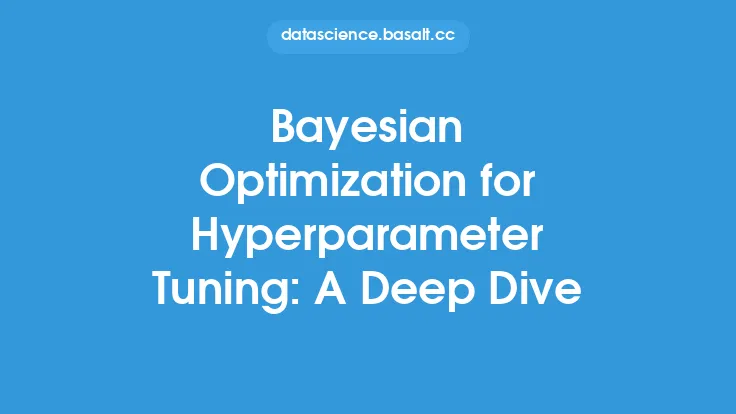Support Vector Machines (SVMs) are a type of supervised learning algorithm that can be used for both classification and regression tasks. They are particularly useful for high-dimensional data and have been widely used in various applications, including image classification, text classification, and bioinformatics. In this article, we will delve into the details of SVMs, including their mathematical formulation, types of SVMs, and their applications.
Introduction to Support Vector Machines
SVMs are based on the concept of finding a hyperplane that maximally separates the data into different classes. The goal is to find a decision boundary that has the maximum margin, which is the distance between the decision boundary and the nearest data points. This is achieved by solving a quadratic optimization problem, which is a computationally efficient method for finding the optimal hyperplane. The SVM algorithm is based on the idea of finding the optimal hyperplane by maximizing the margin between the classes.
Mathematical Formulation of Support Vector Machines
The mathematical formulation of SVMs is based on the concept of finding a hyperplane that maximally separates the data into different classes. The goal is to find a decision boundary that has the maximum margin, which is the distance between the decision boundary and the nearest data points. The SVM algorithm can be formulated as a quadratic optimization problem, which is a computationally efficient method for finding the optimal hyperplane. The optimization problem can be written as:
Minimize: (1/2) * w^T * w
Subject to: y_i * (w^T * x_i + b) >= 1
where w is the weight vector, x_i is the input data, y_i is the output label, and b is the bias term. The optimization problem is solved using a quadratic programming algorithm, which finds the optimal values of w and b that maximize the margin between the classes.
Types of Support Vector Machines
There are several types of SVMs, including:
- Linear SVM: This is the simplest type of SVM, which is used for linearly separable data. The decision boundary is a hyperplane that maximally separates the data into different classes.
- Non-Linear SVM: This type of SVM is used for non-linearly separable data. The decision boundary is a non-linear hyperplane that maximally separates the data into different classes. Non-linear SVMs use a kernel function to map the data into a higher-dimensional space, where the data becomes linearly separable.
- Soft Margin SVM: This type of SVM is used for noisy data, where some data points may be misclassified. The decision boundary is a hyperplane that maximally separates the data into different classes, while allowing for some misclassifications.
- Support Vector Regression (SVR): This type of SVM is used for regression tasks, where the goal is to predict a continuous output variable. The decision boundary is a hyperplane that maximally separates the data into different classes, while minimizing the error between the predicted and actual output values.
Kernel Functions in Support Vector Machines
Kernel functions are used in non-linear SVMs to map the data into a higher-dimensional space, where the data becomes linearly separable. The kernel function is a mathematical function that takes the input data as input and produces a higher-dimensional representation of the data as output. Some common kernel functions used in SVMs include:
- Linear Kernel: This kernel function is used for linearly separable data and produces a linear decision boundary.
- Polynomial Kernel: This kernel function is used for non-linearly separable data and produces a non-linear decision boundary.
- Radial Basis Function (RBF) Kernel: This kernel function is used for non-linearly separable data and produces a non-linear decision boundary.
- Sigmoid Kernel: This kernel function is used for non-linearly separable data and produces a non-linear decision boundary.
Applications of Support Vector Machines
SVMs have been widely used in various applications, including:
- Image Classification: SVMs can be used for image classification tasks, such as object recognition and image tagging.
- Text Classification: SVMs can be used for text classification tasks, such as spam detection and sentiment analysis.
- Bioinformatics: SVMs can be used for bioinformatics tasks, such as protein classification and gene expression analysis.
- Financial Analysis: SVMs can be used for financial analysis tasks, such as stock market prediction and credit risk assessment.
Advantages and Disadvantages of Support Vector Machines
SVMs have several advantages, including:
- High Accuracy: SVMs can produce high accuracy results, especially for high-dimensional data.
- Robustness to Noise: SVMs are robust to noisy data and can produce good results even in the presence of outliers.
- Flexibility: SVMs can be used for both classification and regression tasks.
However, SVMs also have some disadvantages, including:
- Computational Complexity: SVMs can be computationally expensive, especially for large datasets.
- Overfitting: SVMs can suffer from overfitting, especially when the number of features is large.
- Difficulty in Interpretation: SVMs can be difficult to interpret, especially for non-linear decision boundaries.
Conclusion
SVMs are a powerful tool for supervised learning tasks, especially for high-dimensional data. They have been widely used in various applications, including image classification, text classification, and bioinformatics. The mathematical formulation of SVMs is based on the concept of finding a hyperplane that maximally separates the data into different classes. There are several types of SVMs, including linear SVM, non-linear SVM, soft margin SVM, and SVR. Kernel functions are used in non-linear SVMs to map the data into a higher-dimensional space, where the data becomes linearly separable. While SVMs have several advantages, including high accuracy and robustness to noise, they also have some disadvantages, including computational complexity and difficulty in interpretation.





